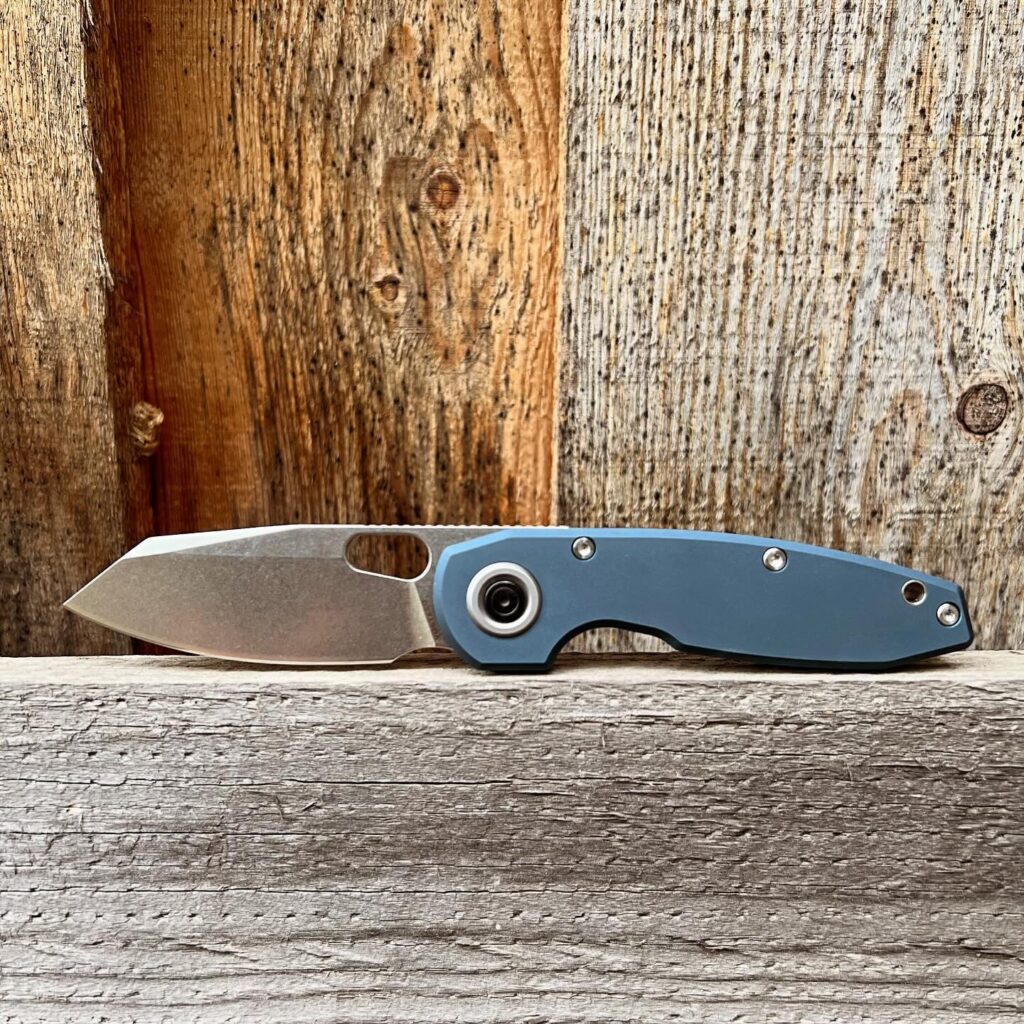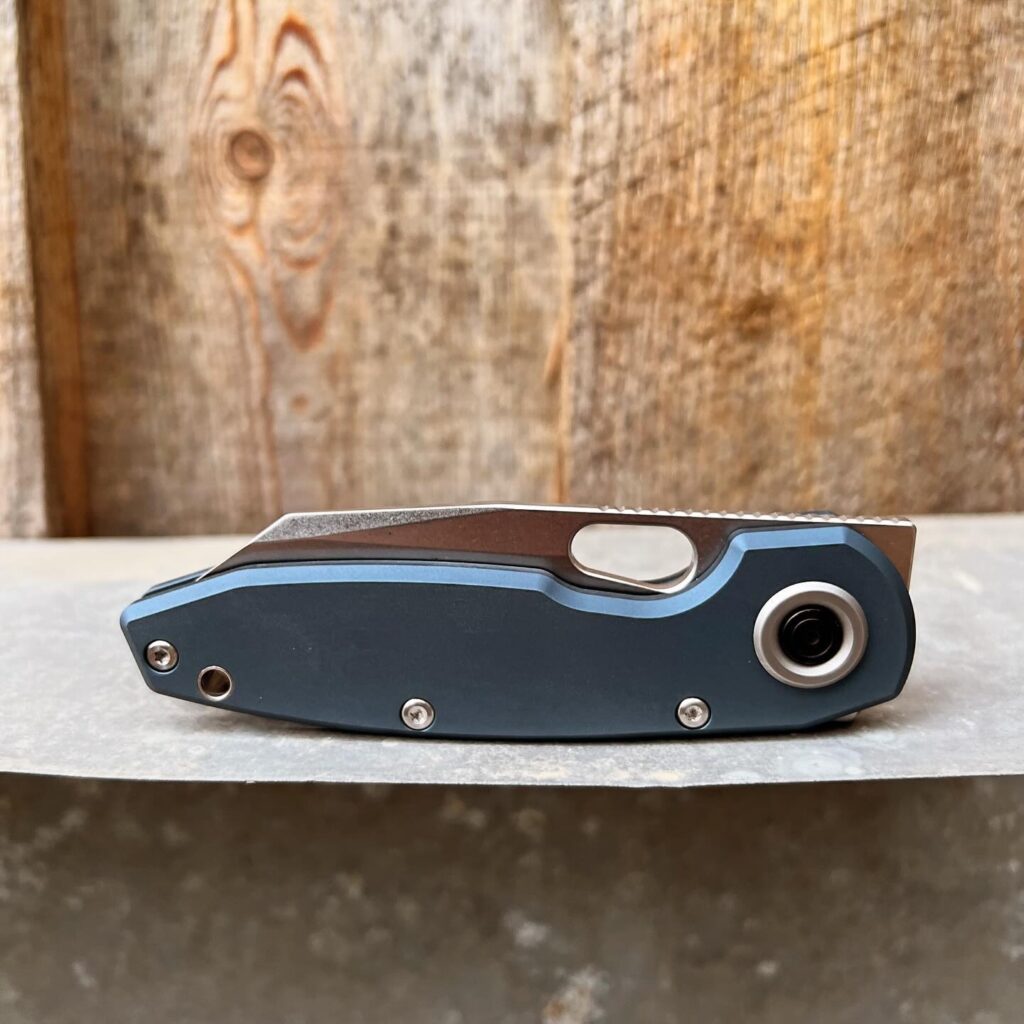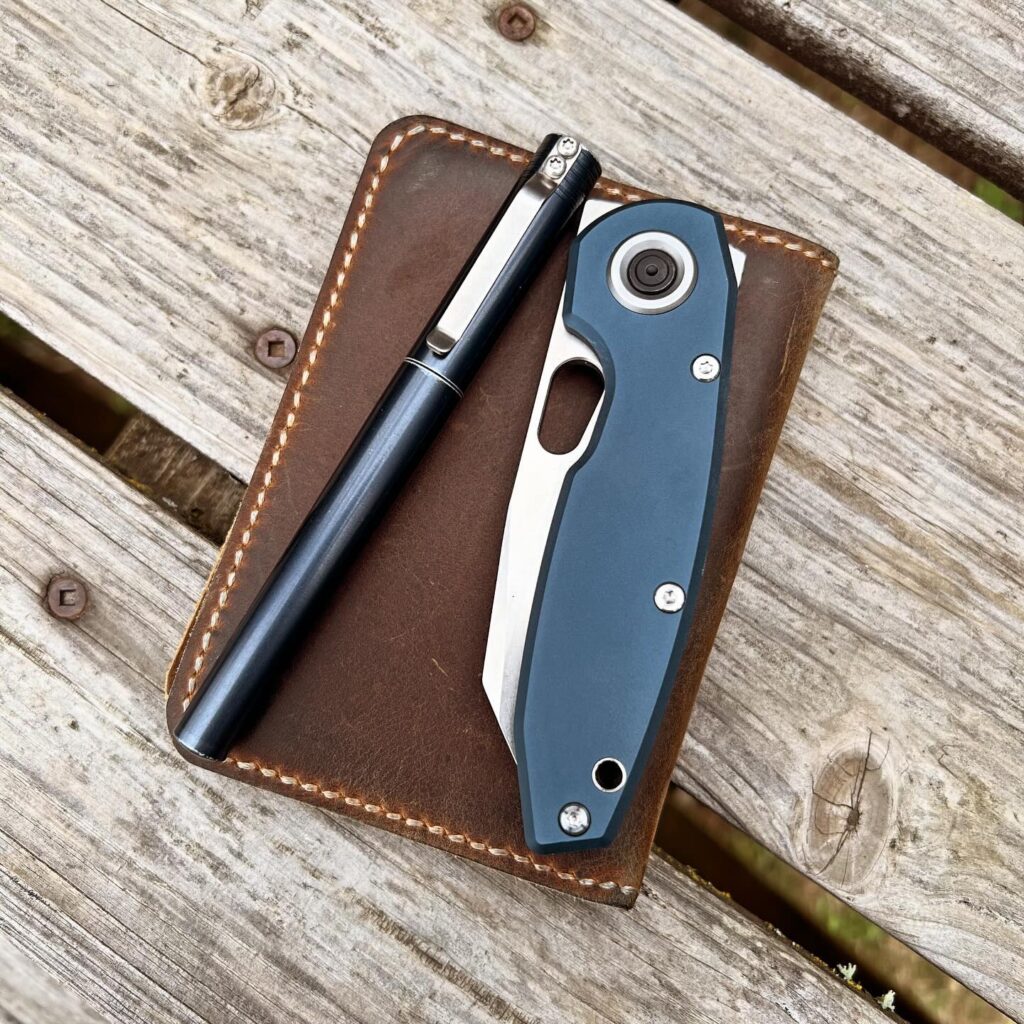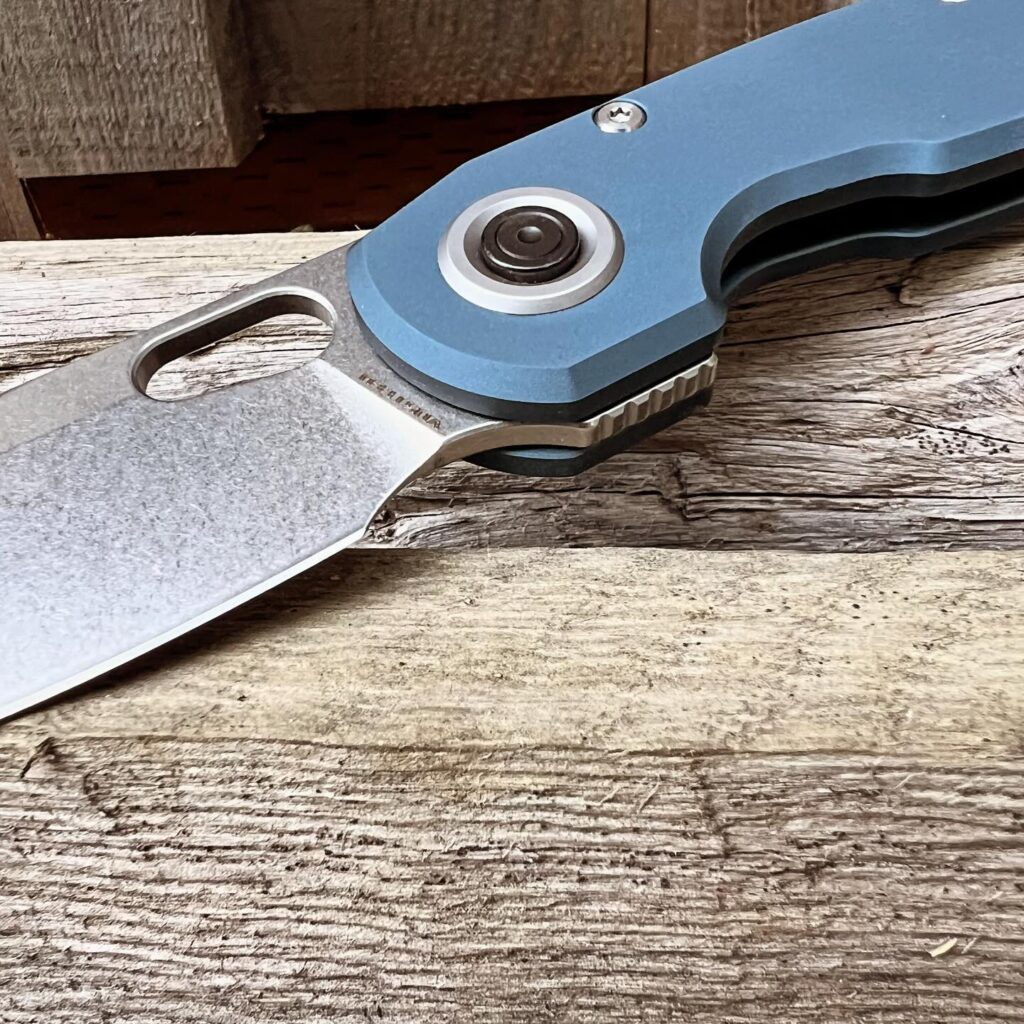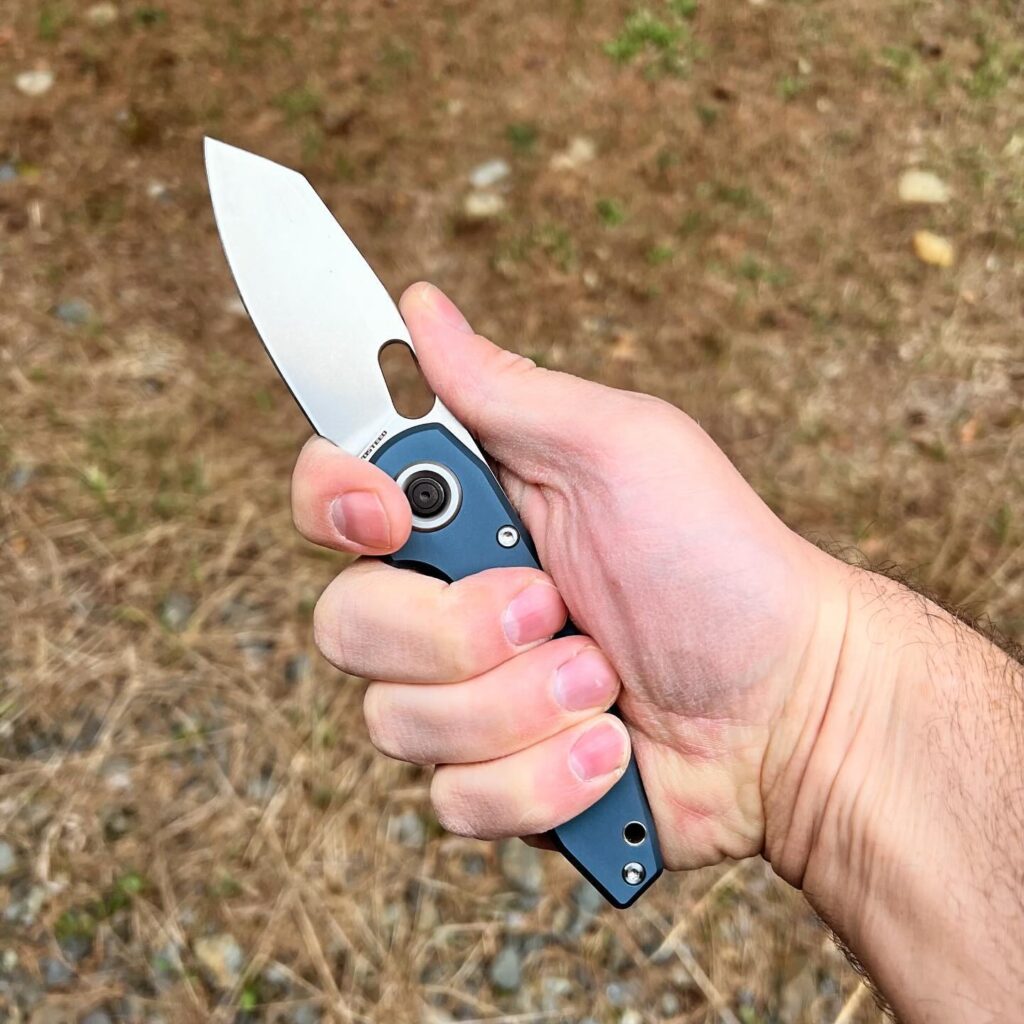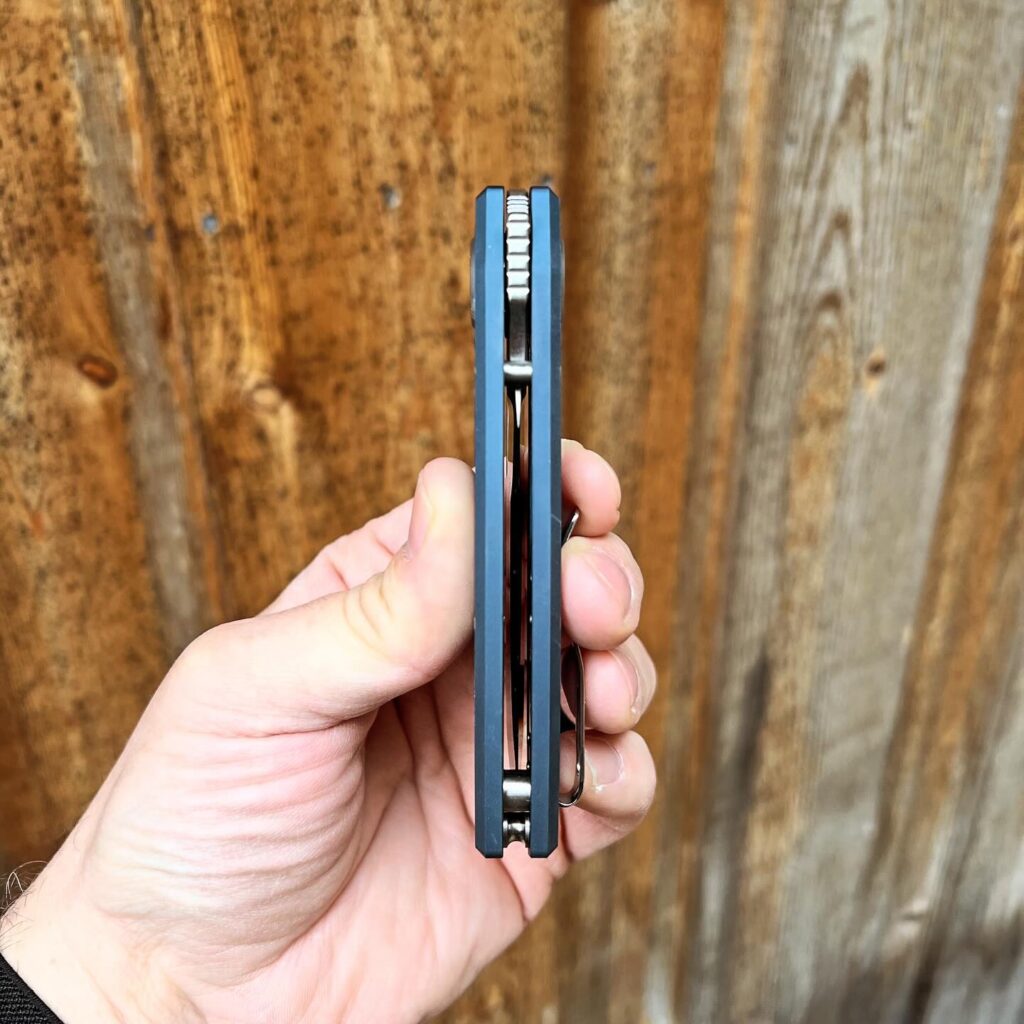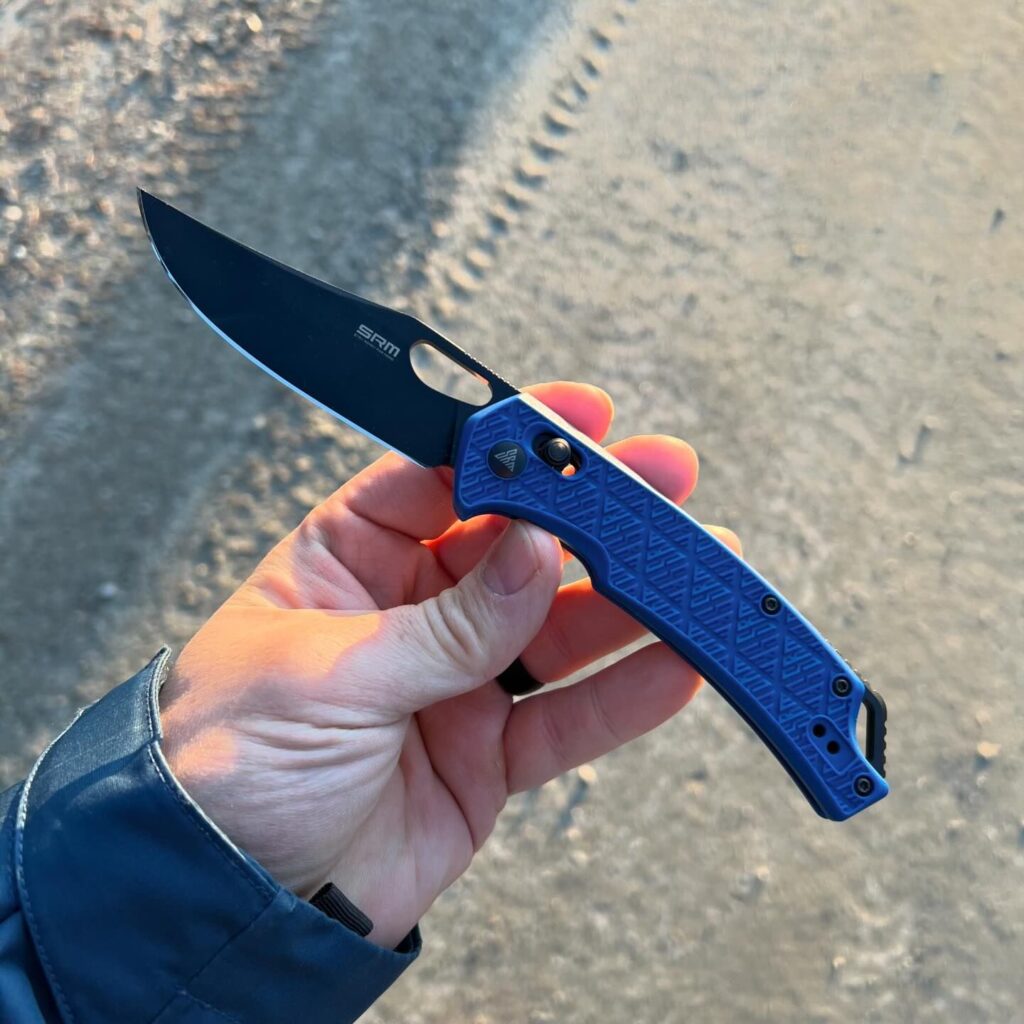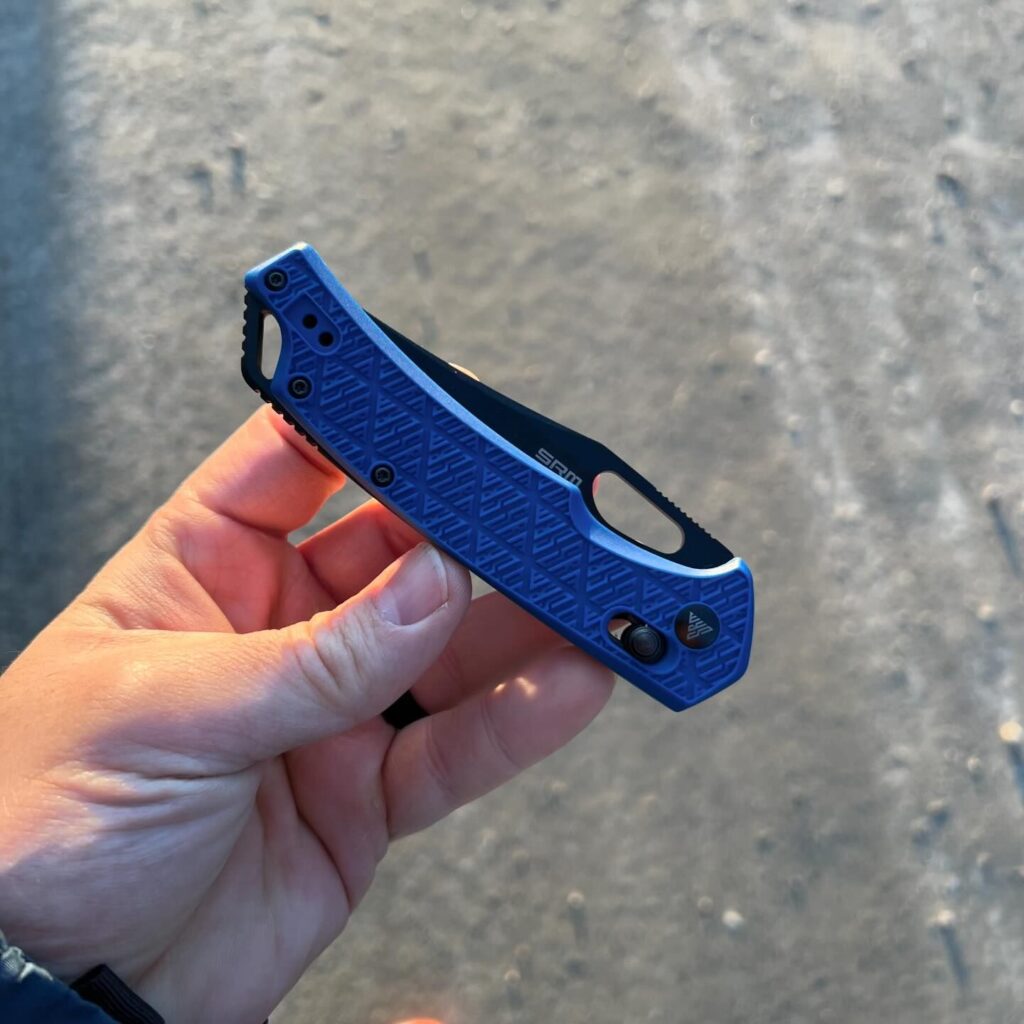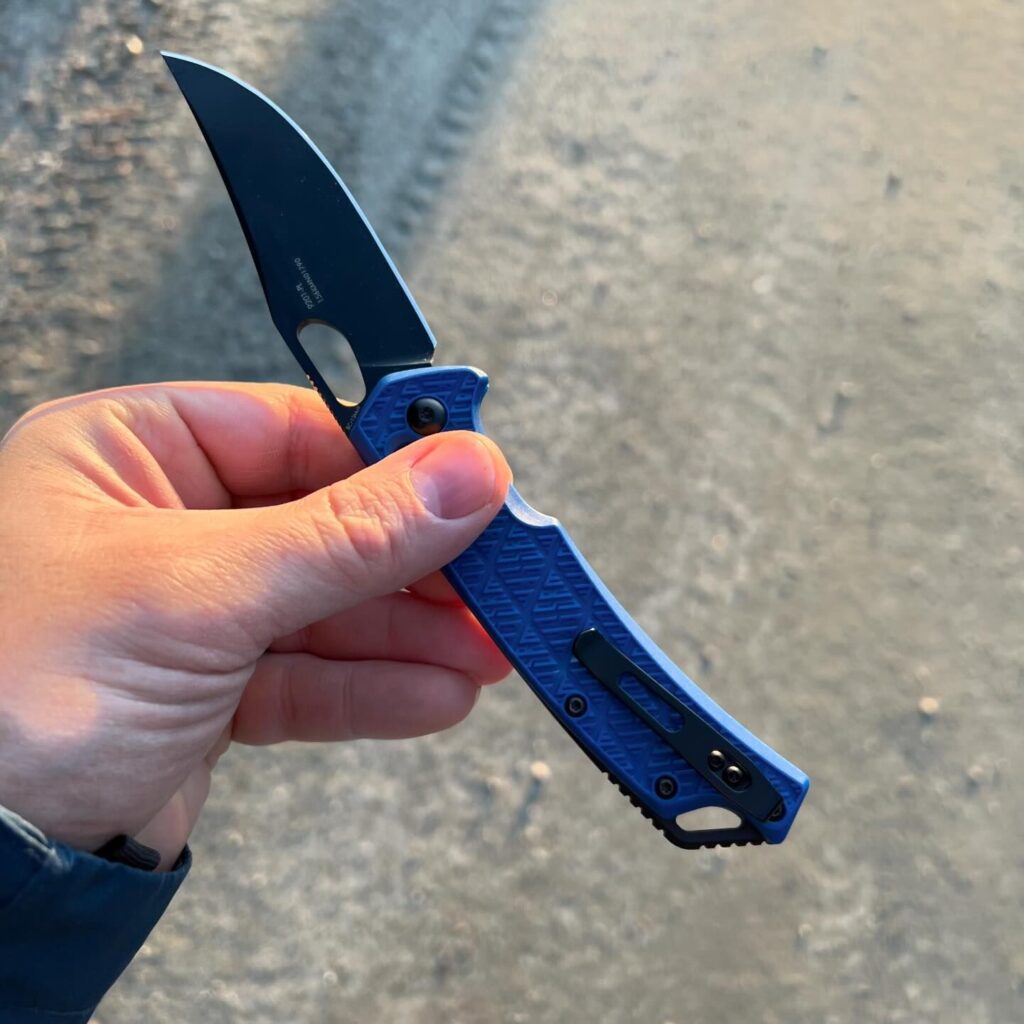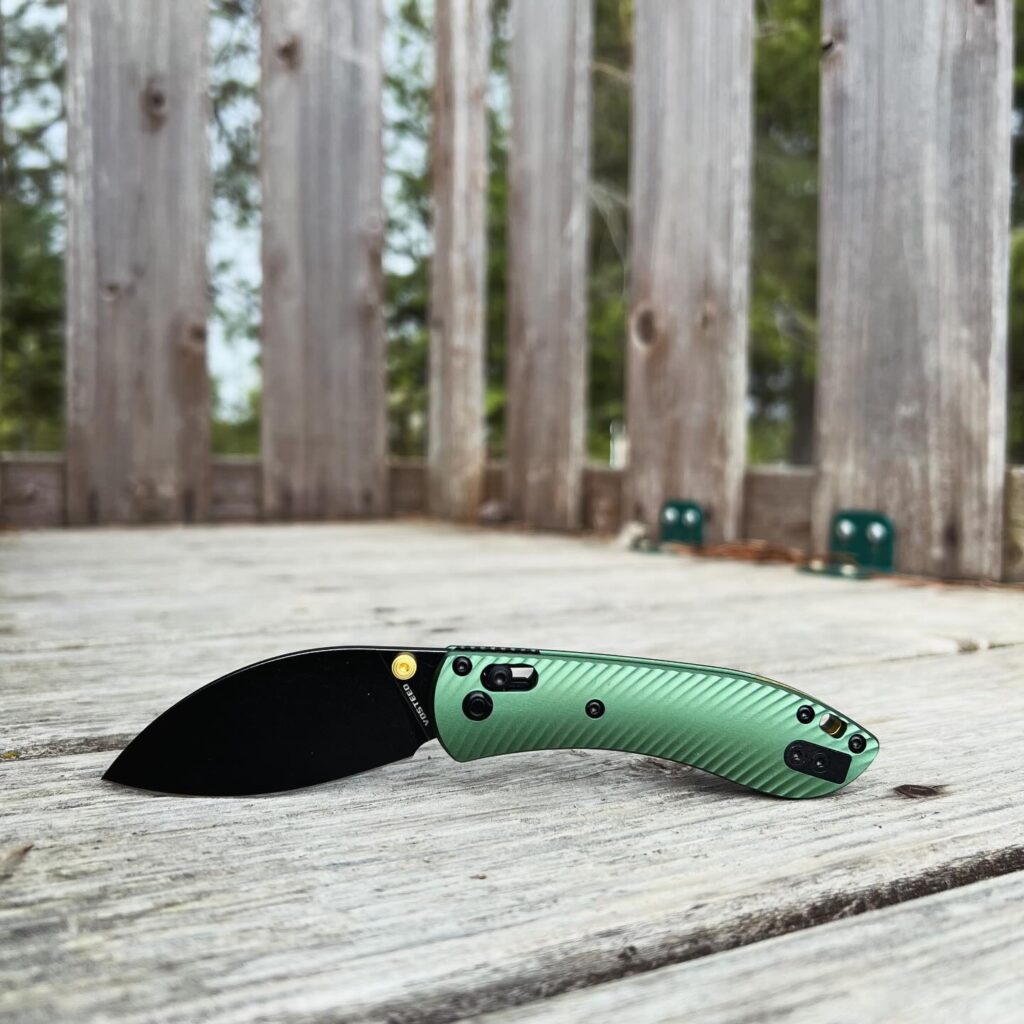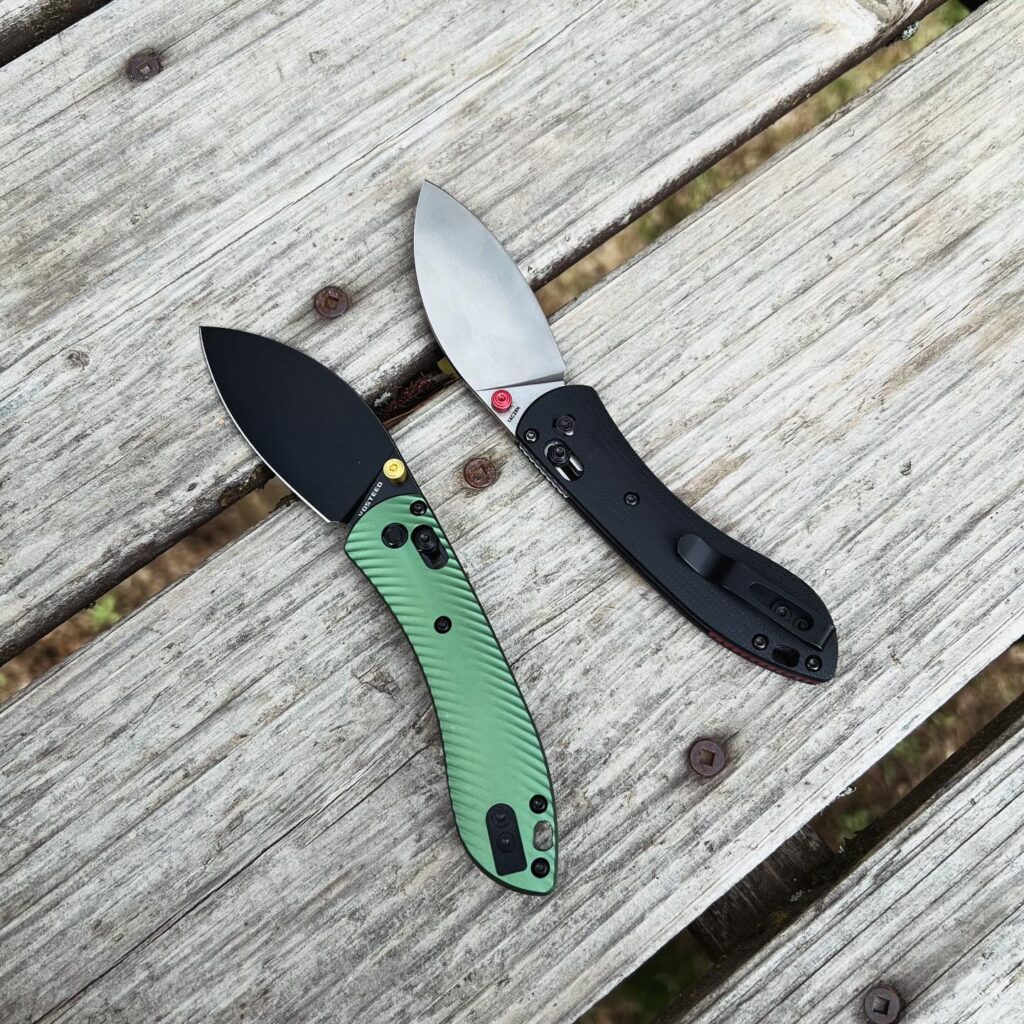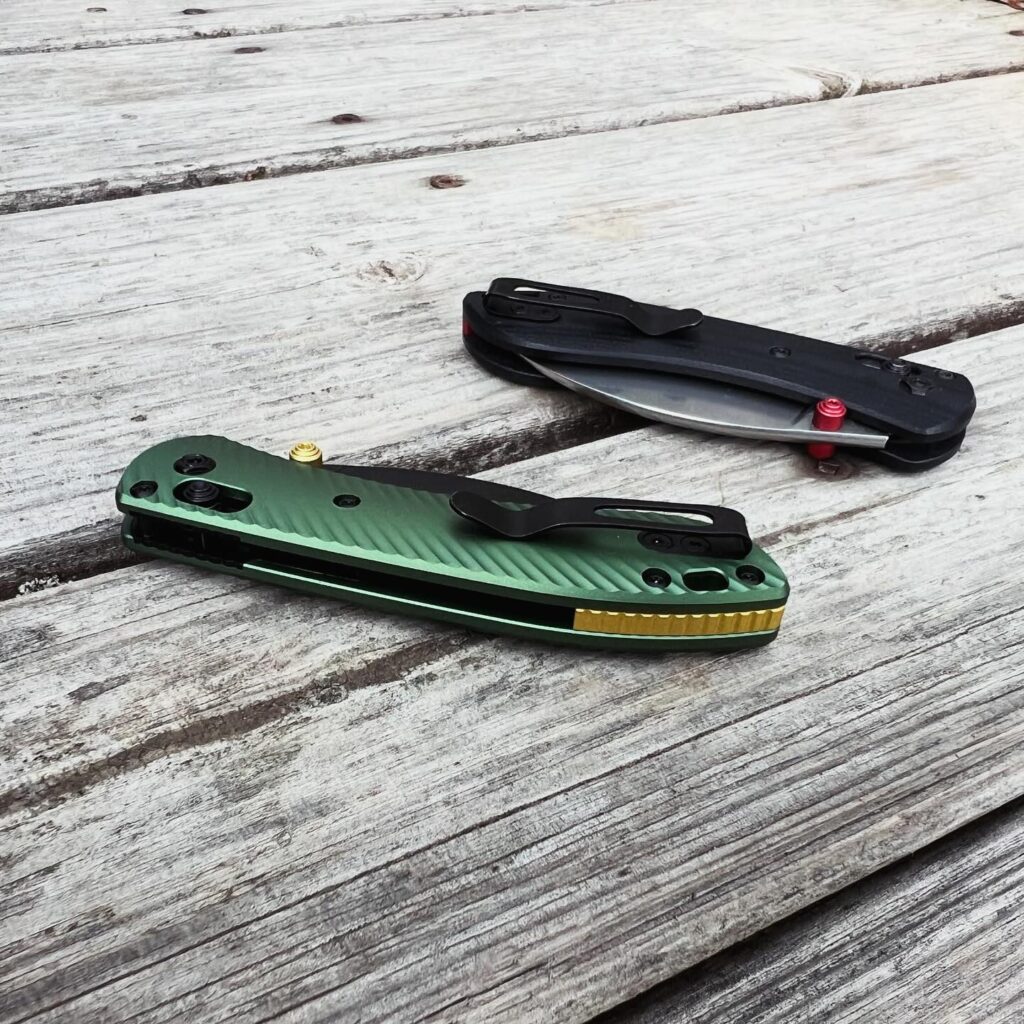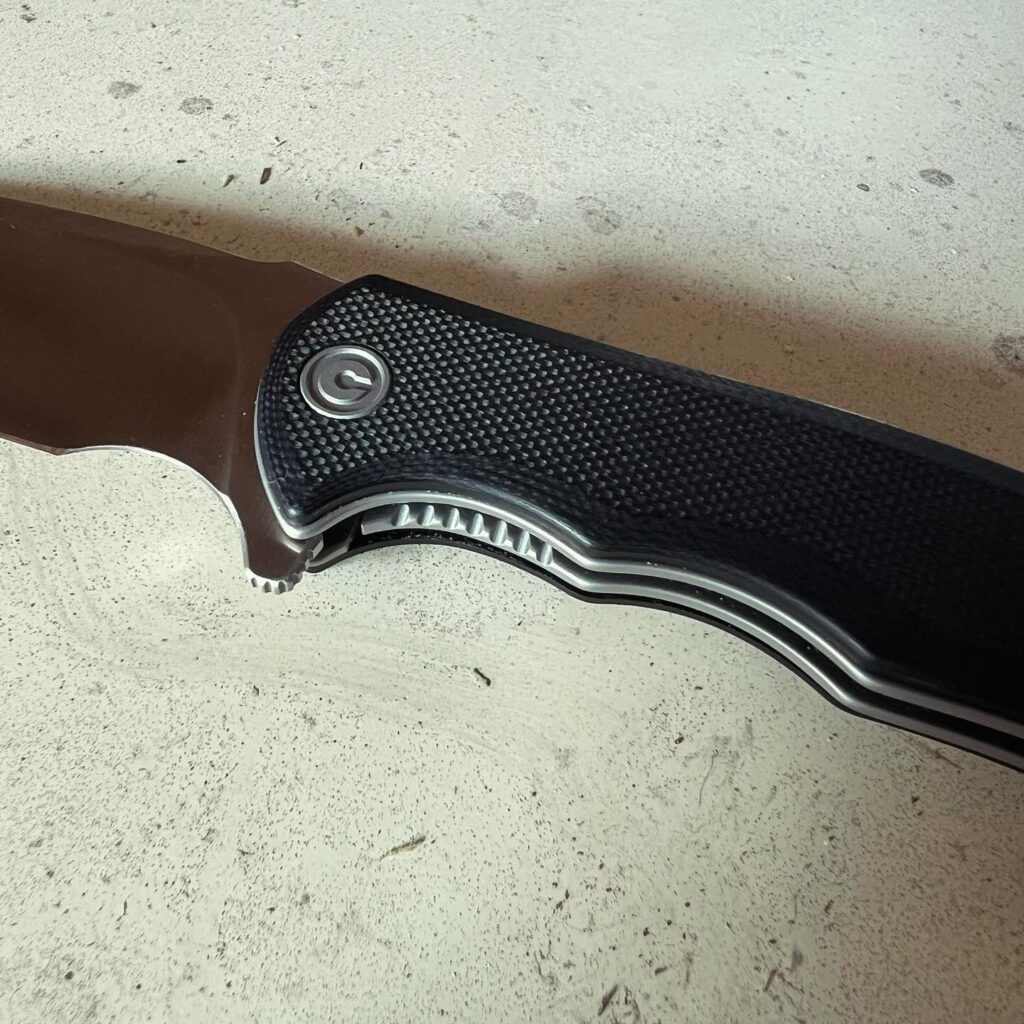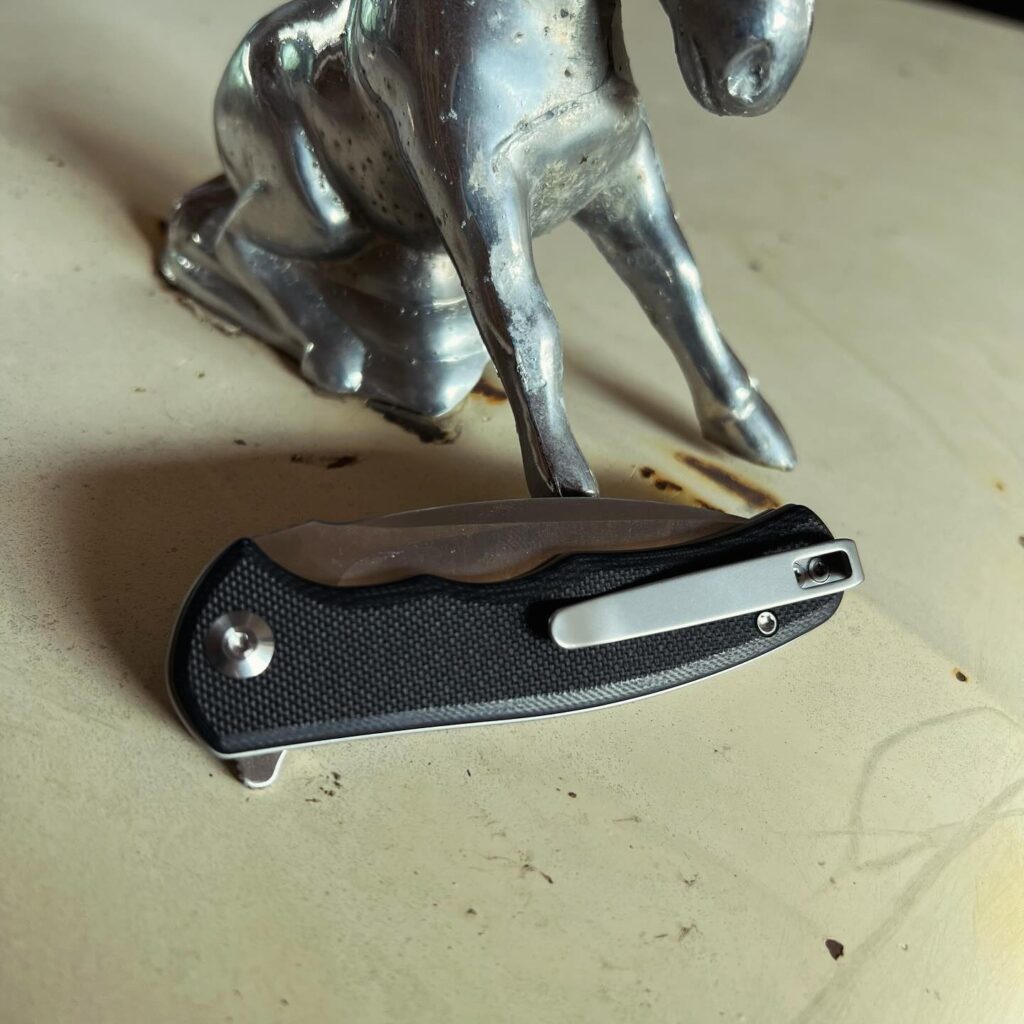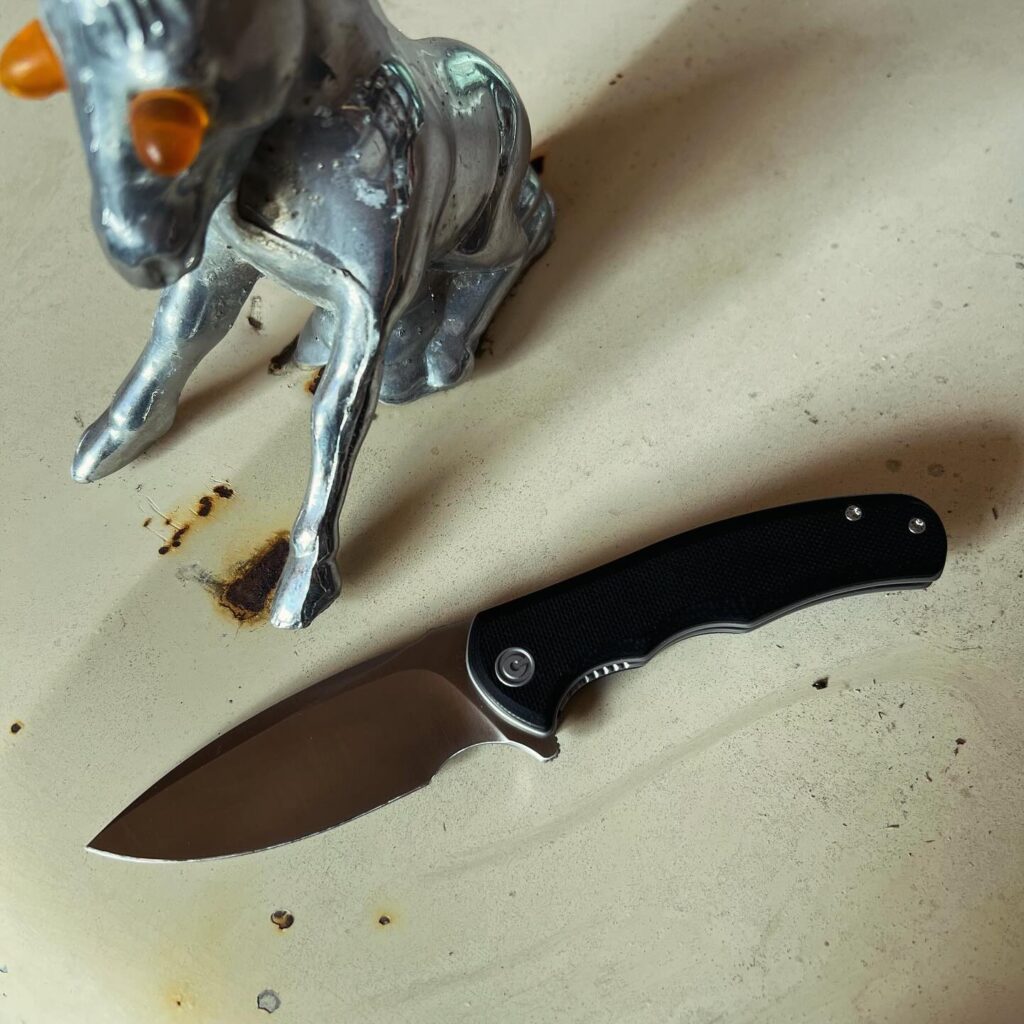The Vosteed Thunderbird seems to be designed with a deep love and understanding of what it takes to make a great knife for the EDC market. It’s large but slim and light. It’s fidgety but functional. It’s aggressively styled but refined. And, it has all the little touches that the knifyest knife guys will geek out about.
In short, the Thunderbird is Vosteed’s love letter to EDC knife aficionados.
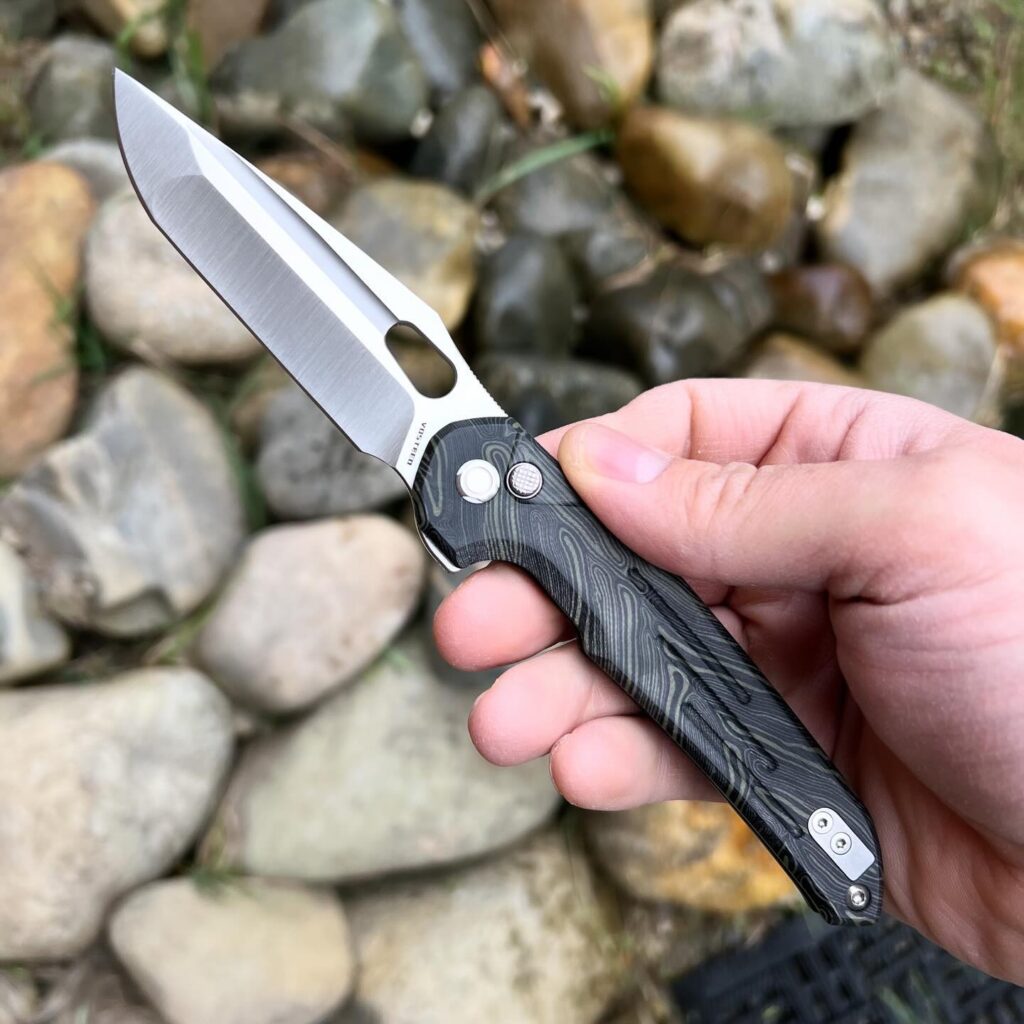
Specs
The Thunderbird is available in MANY different sizes and versions. In short, I have the 3.48″ blade version with Topo handles and S35VN steel. You can learn more about the specs of this review sample (provided by Vosteed) and other variants at Vosteed.com.
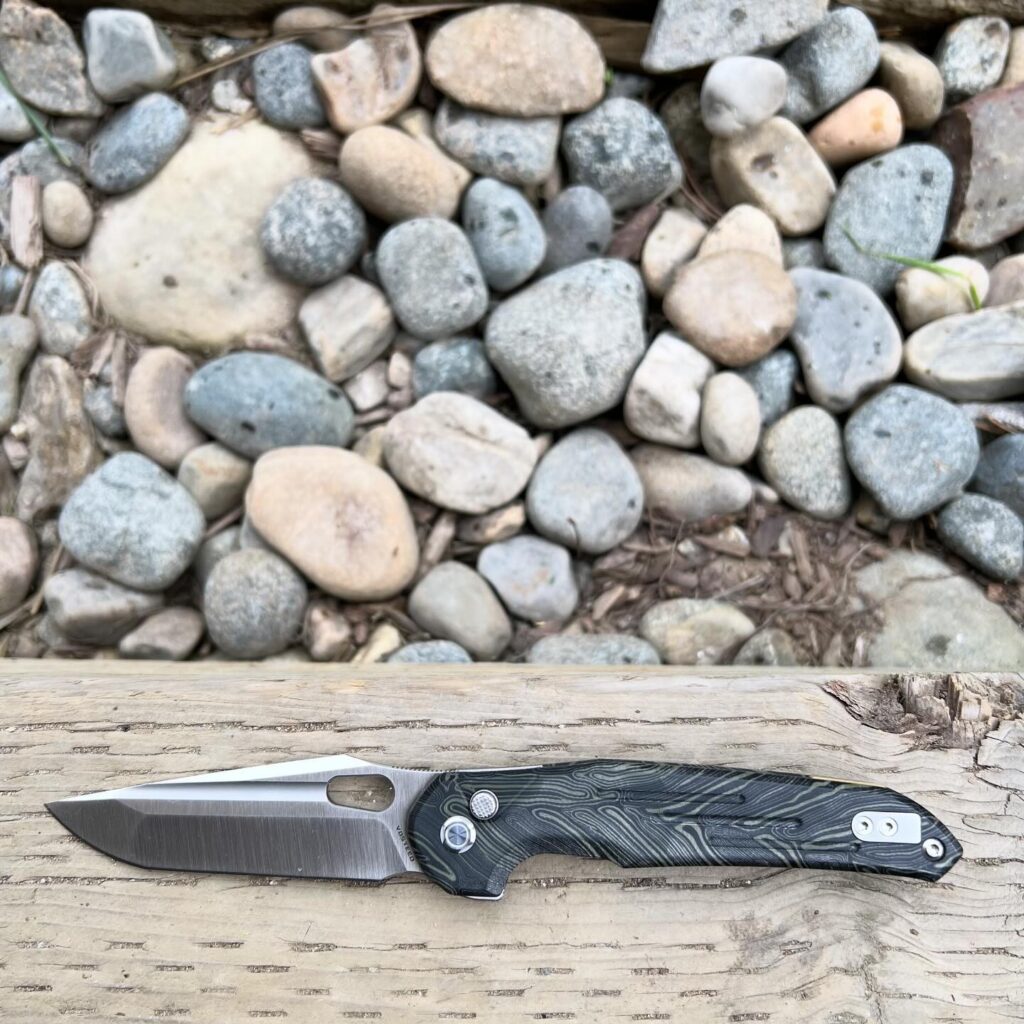
Observations from Use
The Thunderbird is one of Vosteed’s more premium offerings and it shows. The impression is one of refinement, sleekness, and attention to detail. Some knives are smooth. The Thunderbird feels all but frictionless as the blade swings through its arc. It feels… fancy.
This knife is so slim and light for its size that it brings to mind classic EDC knife designs like the Benchmade 710 or 940 (but at a fraction of the cost). It has that same sort of large-knife-that-carries-easier-than-a-small-knife vibe. In that sense, it is sort of optimized for everyday carry.

And while you are carrying it, you can rest assured you will be able to access it… all the ways. It back flips, front flips, slow rolls, flicks off the fuller, wrist flicks, and more. It does all of these opening methods exceedingly well thanks for plenty of jimping in the right places and a well-tuned detent on the Trek Lock.
Speaking of the Trek Lock… Vosteed’s version of a plunge lock or button lock has really come into its own. This one is solid as a rock and has been spine-whacked when it was brand new and again after several weeks of use – no problems.
My favorite thing about the Thunderbird is the blade. It has a wild but useful compound grind that is something like a traditional tanto meets a harpoon. The long straight edge portion of the blade is very thin behind the edge and offers a ton of cutting power. The belly/tip portion is flat ground to put more meat behind the useful tip. A small swedge grind is added to make the tip especially acute while still strong. This knife cuts.
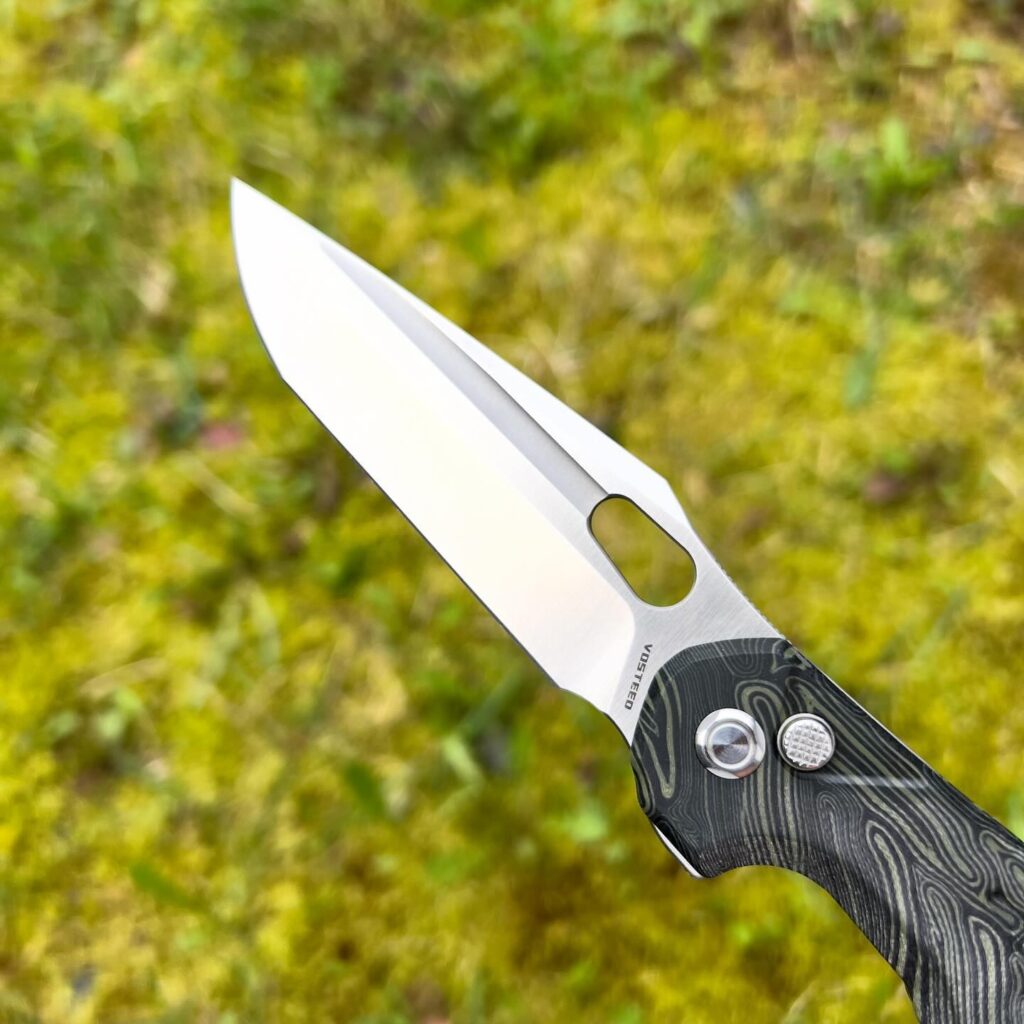
The GT-Mascus handle material used is interesting. It is very smooth but still has a similar grabbiness to something like polished G-10 or linen micata which I like. It has an almost tacky feel when your hands are slightly damp which is reassuring. Vosteed uses this material on several of their more premium knives and now I see why. It offers grip without shredding pockets.
One of the cooler touches that Vosteed adds to each version of the Thunderbird is a little special something in the backspacer. Some have glow-in-the-dark material or some might be a space-agey metal like titanium. In this version, they offer a chunk of solid brass or copper. Mine has started to patina with use which is very cool and will someday (probably) look impressive on Instagram.
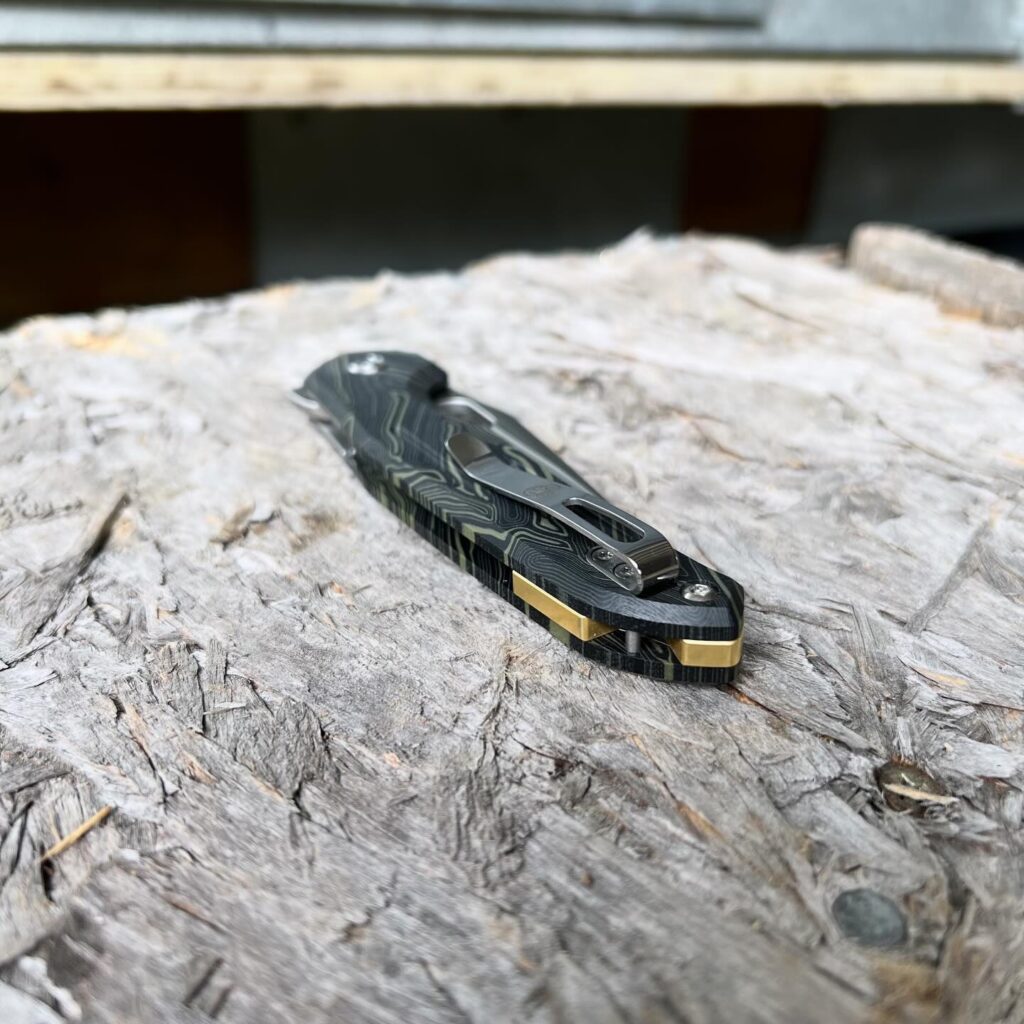
Most of my nitpicks on this knife come down to me being a curmudgeon. First, if the harpoonish thumb ramp was just chopped off the blade, it would be even more slim in the pocket. Second, the chunk of brass in the butt of the knife adds weight. A piece of contrasting GT-Mascus or even anodized aluminum would weigh less. But I admit that both of those changes would make the Thunderbird feel a little less special and a lot less cool.
Wrap Up
The Thunderbird is the kind of knife that comes around when a knife maker intimately understands their target market. It’s practical, functional, easy to live with, refined, and looks cool in an Instagram flat lay. I can see why they continue to iterate on this design because it seems to have it all.
Vosteed is, as of the time of this writing, offering 20% off many knives for Mother’s Day.

